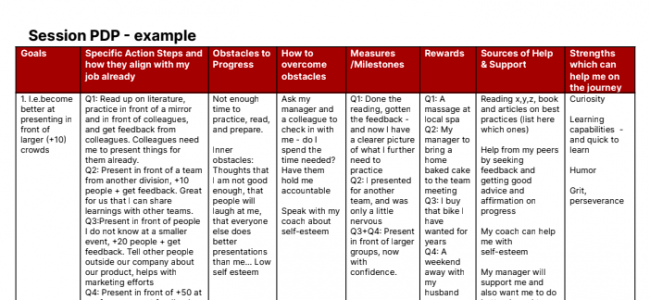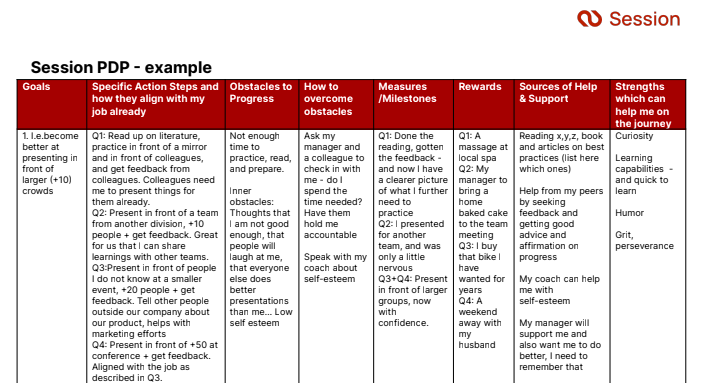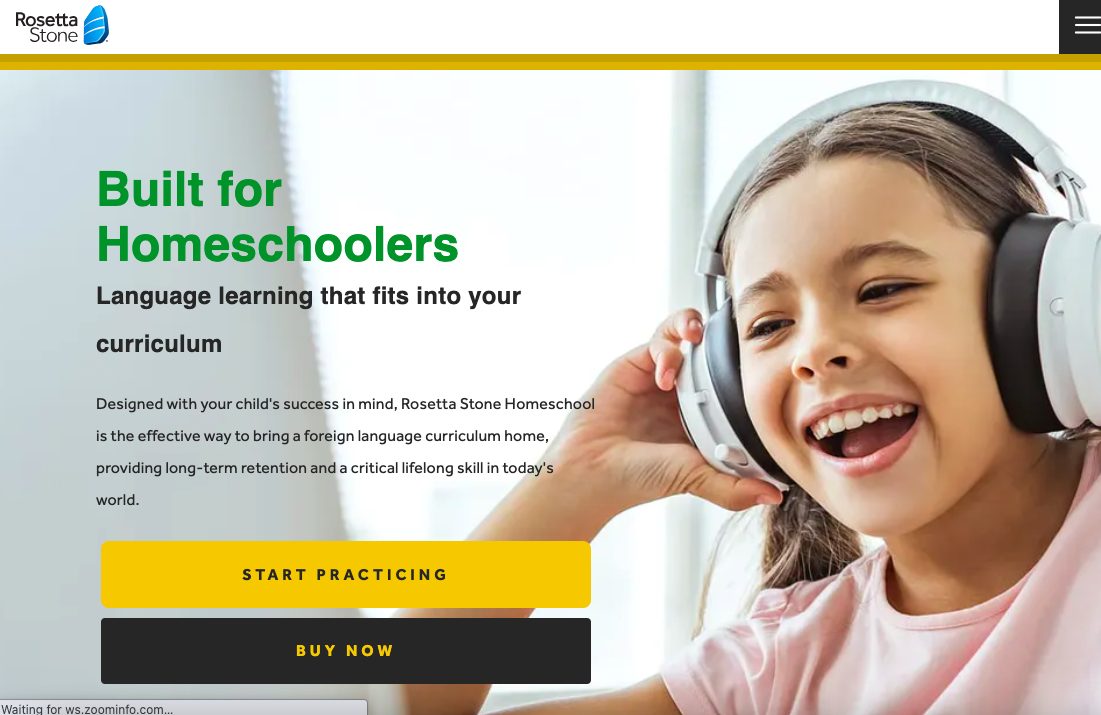
Embark on a journey of professional growth and development through education and training. This comprehensive guide unveils the significance of education and training, explores various opportunities, and provides a step-by-step framework for crafting a personalized professional development plan. Prepare to elevate your skills, knowledge, and career trajectory as we delve into the transformative power of learning.
Education and Training
Education and training are cornerstones of professional development, empowering individuals to enhance their knowledge, skills, and abilities. They provide structured opportunities to acquire new competencies, refine existing ones, and stay abreast of industry advancements.
Types of Education and Training Opportunities
A diverse array of education and training options cater to various learning styles and career aspirations. These include:
- Formal Education:Degree programs, certifications, and diplomas offered by accredited institutions provide a structured and comprehensive learning experience.
- On-the-Job Training:Hands-on experience and mentorship within the workplace allow employees to learn and apply skills in a practical setting.
- Online Learning:Virtual platforms offer flexible and accessible learning opportunities, enabling individuals to study at their own pace and convenience.
- Workshops and Seminars:Short-term, intensive programs provide focused training on specific topics or skills.
- Conferences and Symposia:Industry events offer opportunities for networking, knowledge sharing, and exposure to cutting-edge developments.
Public School Education
Public schools are the cornerstone of education in most societies, providing the foundational knowledge and skills necessary for individuals to participate fully in the social, economic, and political life of their communities. They play a crucial role in fostering intellectual curiosity, critical thinking, and problem-solving abilities, preparing students for higher education and the workforce.
Obtaining a traditional public school education offers several benefits. Firstly, it provides a structured and standardized curriculum that ensures all students receive a well-rounded education. This includes core subjects such as math, science, history, and language arts, as well as electives that allow students to explore their interests and develop their talents.
Secondly, public schools provide a social environment where students can interact with peers from diverse backgrounds, develop social skills, and learn the importance of teamwork and collaboration. This socialization process is essential for personal and professional growth, preparing students for success in a globalized world.
However, there are also some challenges associated with traditional public school education. One concern is the potential for overcrowding and underfunding, which can lead to limited resources and large class sizes. This can make it difficult for teachers to provide individualized attention to each student, especially those who may need additional support.
Additionally, the rigidity of the public school system can sometimes stifle creativity and independent thinking. The emphasis on standardized testing and adherence to prescribed curricula may leave little room for students to explore their own interests or pursue alternative learning pathways.
Despite these challenges, public schools remain a vital part of education and play a significant role in shaping the future of individuals and society as a whole.
Online Education
Online education has become increasingly popular in recent years, offering flexibility, accessibility, and a wide range of learning opportunities. It involves the delivery of educational content and instruction through the internet, allowing individuals to learn from anywhere with an internet connection.Online education platforms offer a diverse selection of courses, programs, and degrees from reputable institutions and organizations worldwide.
This enables learners to pursue their educational goals without geographical or time constraints. Additionally, online learning often provides interactive features such as virtual classrooms, discussion forums, and video conferencing, facilitating collaboration and peer-to-peer engagement.
Advantages of Online Education
* Flexibility:Online education allows learners to study at their own pace and on their own schedule, accommodating busy work and personal commitments.
Accessibility
Online learning removes geographical barriers, enabling individuals from remote areas or with mobility limitations to access quality education.
Wide course selection
Online platforms offer a vast array of courses and programs, catering to diverse learning needs and interests.
Affordability
Online education can be more cost-effective than traditional on-campus programs, as it eliminates expenses such as transportation and parking.
Career advancement
Online education can provide individuals with the skills and knowledge necessary to advance their careers or transition into new fields.
Disadvantages of Online Education
* Lack of face-to-face interaction:Online education may lack the same level of personal interaction and networking opportunities as traditional classroom settings.
Self-discipline required
Online learning requires a high level of self-discipline and motivation, as learners are responsible for managing their own time and progress.
Technical issues
Online education relies heavily on technology, and technical difficulties can disrupt the learning process.
Limited hands-on experience
Certain subjects, such as laboratory sciences or practical arts, may be difficult to learn effectively through online platforms.
Accreditation concerns
It is crucial to ensure that the online education platform and programs are accredited by recognized organizations to maintain credibility and ensure the quality of education.
Examples of Reputable Online Education Platforms
* Coursera
- edX
- Udacity
- Udemy
- LinkedIn Learning
Education and Reference
Educational resources are critical for professional growth and development. Reliable sources provide up-to-date knowledge, industry insights, and best practices. They empower individuals to stay competitive and adapt to evolving industry trends.
Key Resources for Staying Up-to-Date
* Industry Journals and Publications:Specialized publications offer in-depth analysis, case studies, and expert opinions on specific industries.
Online Courses and Certifications
Platforms like Coursera, edX, and LinkedIn Learning provide access to online courses and certifications that enhance skills and knowledge.
Conferences and Webinars
Industry events and webinars offer opportunities for networking, learning from experts, and staying abreast of latest developments.
Research Papers and White Papers
Academic research and industry white papers provide valuable insights and data-driven analysis on emerging trends and best practices.
Books and E-books
Traditional and digital books offer comprehensive overviews, case studies, and theoretical frameworks for professional development.
Educational Technology
Educational technology plays a pivotal role in modern education, enhancing learning experiences and making them more engaging and effective. From interactive simulations to virtual reality, technology provides educators with a plethora of tools to customize instruction and cater to diverse learning styles.
Innovative Educational Technologies
The educational landscape is constantly evolving, and new technologies emerge regularly to transform the way we learn and teach. Here are a few examples of innovative educational technologies:
- Virtual Reality (VR):VR headsets immerse students in interactive learning environments, allowing them to explore historical events, conduct scientific experiments, and visit distant lands from the comfort of their classroom.
- Augmented Reality (AR):AR overlays digital information onto the real world, enabling students to interact with virtual objects and simulations in their physical environment.
- Adaptive Learning Platforms:These platforms use artificial intelligence to track student progress and tailor instruction to their individual needs, providing personalized learning experiences.
- Gamification:Incorporating game-like elements into learning makes it more engaging and motivating, encouraging students to actively participate and strive for success.
- Online Learning Platforms:Online learning platforms provide access to educational resources and courses from anywhere in the world, expanding educational opportunities for students of all ages.
Creating a Professional Development Plan

Creating a professional development plan is essential for career advancement and personal growth. It helps you identify your goals, develop a strategy to achieve them, and track your progress. Here’s a step-by-step guide to create a comprehensive professional development plan.
Step 1: Assess Your Current Skills and Goals
Begin by evaluating your current skills, strengths, and weaknesses. Consider your career goals and aspirations. This will help you identify areas where you need to improve and develop.
Step 2: Research and Identify Opportunities
Explore various professional development opportunities such as workshops, seminars, online courses, and conferences. Consider the relevance of these opportunities to your career goals and learning objectives.
Step 3: Create a Development Plan
Develop a detailed plan that Artikels your learning objectives, timeline, and resources. Prioritize your goals and allocate time and resources accordingly. Set realistic timelines and track your progress regularly.
Step 4: Implement Your Plan
Enroll in courses, attend workshops, and engage in other learning activities as per your plan. Actively participate and seek opportunities to apply your new skills and knowledge.
Step 5: Evaluate and Adjust
Regularly evaluate your progress and make adjustments to your plan as needed. Reflect on what you have learned and identify areas where you can improve. Seek feedback from mentors or colleagues to enhance your development.
Final Conclusion
In the realm of professional development, education and training serve as indispensable pillars. By embracing a commitment to continuous learning, individuals can unlock their full potential, navigate evolving industry landscapes, and achieve their career aspirations. The strategies and resources Artikeld in this guide empower you to design a tailored professional development plan that will propel you towards success.
Embrace the opportunities that lie ahead and embark on a lifelong journey of learning and growth.
User Queries
How do I identify my professional development needs?
Conduct a self-assessment to evaluate your strengths, weaknesses, and career goals. Consider industry trends, company objectives, and feedback from colleagues and supervisors.
What types of education and training opportunities are available?
Explore traditional education programs (e.g., degrees, certifications), online courses, workshops, conferences, and on-the-job training.
How do I create a comprehensive professional development plan?
Follow a structured approach that includes identifying goals, researching options, setting timelines, securing resources, and monitoring progress.
How can I stay motivated throughout my professional development journey?
Set realistic goals, track your progress, celebrate successes, and seek support from mentors, colleagues, or a professional development community.
What are the benefits of investing in professional development?
Enhanced skills, increased knowledge, improved job performance, career advancement opportunities, and personal growth.

